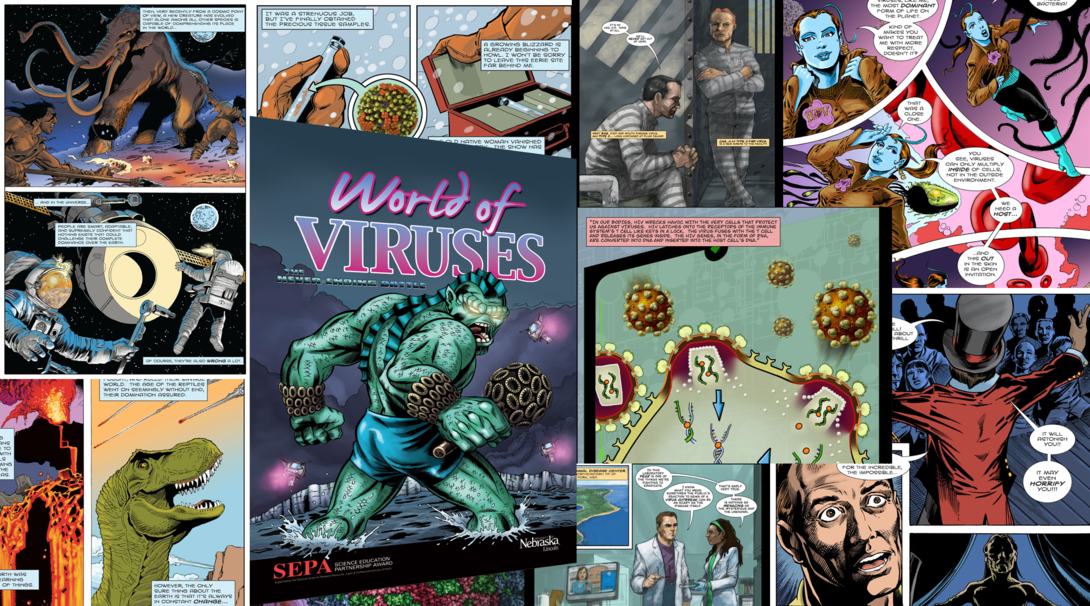
Comic books have enthralled kids and kids-at-heart for decades, spawning franchises that now grace the silver screen and gross billions of dollars.
Now for the real test: Can they capture teenage interest in scientific issues?
Judy Diamond, professor and curator at the University of Nebraska State Museum, will address this question Feb. 13 at the annual meeting of the American Association for the Advancement of Science in San Jose, Calif.
Diamond, a AAAS fellow, directs the World of Viruses project, which has enlisted virologists, science educators, professional writers and artists to develop comics that build narratives around viruses and infectious disease.
The comics have centered on viruses ranging from HIV to influenza, personifying them within stories designed to engage as they inform.
“Understanding how viruses and infectious diseases influence our health, communities and environments is vital for all people, not just scientists,” Diamond said. “Despite the critical roles that viruses play in our lives, many people have limited knowledge of them and how they cause disease.”
To determine whether comics can bolster science engagement among teenagers – specifically those with no prior interest in it – Diamond and colleagues conducted a study that randomly assigned 873 adolescents to read either World of Viruses comics or essays covering similar content.
The study found that teenagers who read the comics were more than five times as likely to express interest in learning more about the subject. The authors reported that this effect was even more evident among students who did not consider science part of their personal identity.
Tests of content knowledge also showed that teens learned just as much from the comics as they did from the essays.
“Everybody thinks that comics are really cool – particularly as a vehicle for teaching science – but very few have done large-scale studies about this,” Diamond said. “Now we can say that kids who aren’t interested in science can really learn from comics and get motivated to learn more about viruses.”
Even if such efforts don’t lead a teenager to pursue a career in science, they may help spur a lifelong interest that improves scientific literacy, Diamond said.
“Attracting youth who do not usually engage with science, who do not identify with the characteristics of scientists, or who have low achievement in science is a particularly important goal,” Diamond said.
World of Viruses represents a collaboration among the Nebraska State Museum, the Nebraska Center for Virology and UNL’s Department of Sociology. Diamond said the project has distributed its comics to roughly 5,000 public school teachers for use in the classroom.
To view the comics, visit http://worldofviruses.unl.edu.
The World of Viruses project is funded by the National Institutes of Health through the Science Educational Partnership under award number R25RR024267. The content is solely the responsibility of the authors and does not necessarily represent the official views of the National Institutes of Health.








